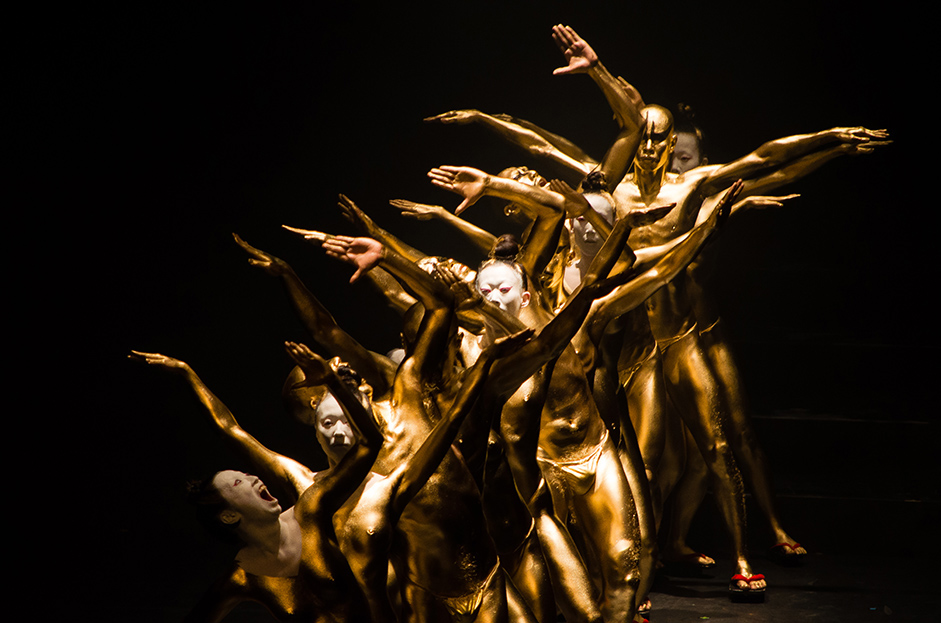'Many people have a preconception about butoh — that it is performed by dancers whose bodies are painted white. So when we debuted our current program, 'Crazy Camel,' in France, and we came on stage covered in gold-colored powder, the fans and experts there thought we were pioneering a new style," 72-year-old butoh master Akaji Maro says in a recent email interview. "In fact, this gold-powdered showy performance style has existed as a cabaret-show flip side of orthodox butoh since not long after the genre was started in 1959. It was developed by two trailblazers — Tatsumi Hijikata (1928-86) and Kazuo Ohno (1906-2010)."
Maro founded the butoh dance company Dairakudakan (Great Camel Ship) in 1972, and the astonishingly athletic dancer has since also become well known to the non-butoh world as both a stage and screen actor. He was delighted by the audience's enthusiastic reaction to "Crazy Camel" at the Maison de la Culture du Japon in Paris in 2012, and his company went on to perform the same kinpun (gold-powdered) show to similar great effect in 2013 at the Montpellier Dance Festival in the south of France and the Festival Automne en Normandie in and around Rouen in the north, before returning to Poitiers in west-central France last May.
Ironically, though, as the golden dancers helped make the captivating art form of butoh familiar to European theatergoers, "Crazy Camel" was never staged in its original home of Japan.

















With your current subscription plan you can comment on stories. However, before writing your first comment, please create a display name in the Profile section of your subscriber account page.